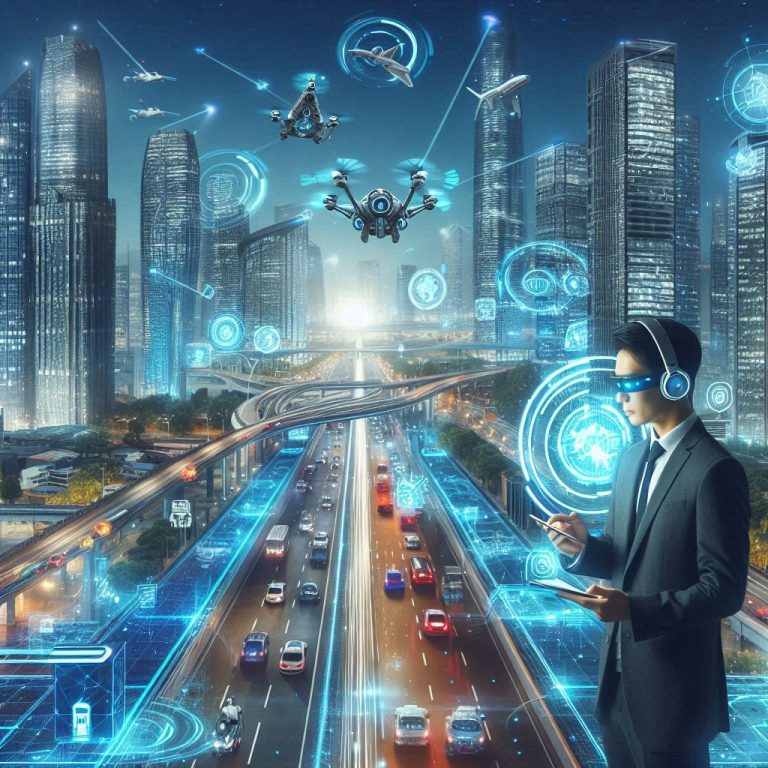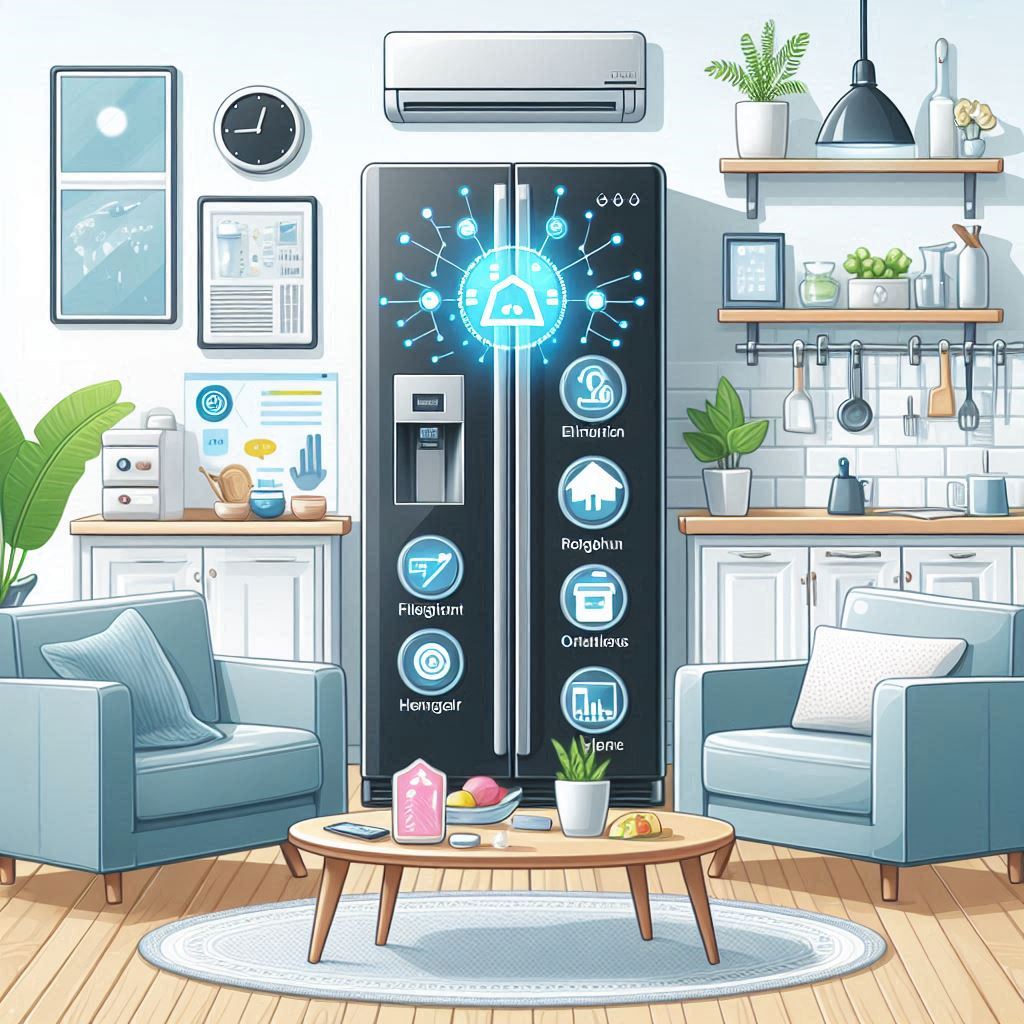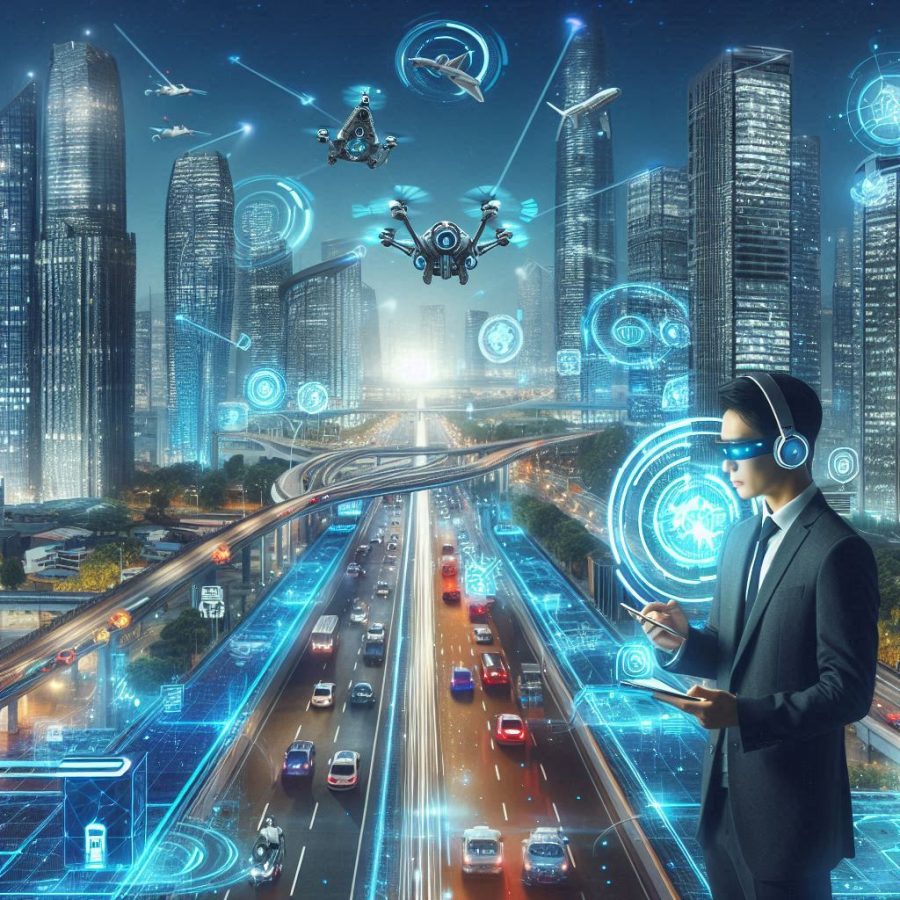What is Internet of Things?
Internet of Things is an amazing field that includes connecting physical devices, sensors and actuators to the internet, enabling them to interact with the physical world and with each other. It has made it possible to automate various technological devices such as home appliances which includes Refrigerator, Washing Machine, Air conditioner, etc. A home appliance is considered smart when it is accessible anywhere outside the home, even as far as being out of the country. This is exactly where IoTs impacts.

IoTs in Smart Home Appliances.
Smart Home Appliances are appliances that make our lives easier, more convenient and energy-efficient. There are various existing smart home appliances out there, here are few examples:
- Smart Refrigerators: They manage groceries kept in them, monitors food expiration, display recipes and control temperature, etc.
- Smart Washing Machines: They detect fabric types, optimize cycles and notify when cycles finish.
- Smart Door Locks: They control access to the door, grant virtual keys to a register user and monitor entry/exit activity.
- Smart Ovens: They recognize food, automatically set cooking settings, and allow remote monitoring.
- Smart Coffee Makers: Like Smarter Coffee Machine and Amazon Alexa-enabled coffee makers, they schedule brewing, adjust strength, and integrate with voice assistants.
- Smart Air Conditioners: Like LG Smart ThinQ AC and Samsung SmartThings AC, they adjust temperature, schedule cooling, and optimize energy consumption.
- Smart Vacuum Cleaners: Like iRobot Roomba and Neato Botvac, they map spaces, schedule cleaning, and adjust suction power.
- Smart Dishwashers: Like Bosch Home Connect Dishwasher and Samsung SmartThings Dishwasher, they optimize cycles, detect soil levels, and notify you when cycles finish.
- Smart Water Purifiers: Like Samsung SmartThings Water Purifier and LG Smart ThinQ Water Purifier, they monitor water quality, schedule maintenance, and optimize filtration.
IoTs have greatly impacted smart homes appliances by creating connectivity with them so that they can be accessed from anywhere at any period of time. One can be on vacation and still find it possible to keep an eye on the appliances left in the home.

Factors that contribute to the adoption of smart home appliances usage
- Compatibility with virtual assistant: Virtual assistants like Apple Siri, Google assistant, Microsoft Cortana, etc enable users to control and interact with smart home appliances using voice commands.
- Remote monitoring and controlled capabilities: Smart home appliances can be easily accessible remotely through mobile apps, web portals, etc.
- Ease of use: Smart home appliances are easy to use as it entails clear instructions, have user-friendly interface and previous experience with similar devices.
- Enhanced safety and security features: Smart home appliances are safe to use with the advanced security features like video monitoring and alert system.

Key Technologies used in IoTs
- Voice Assistants: Voice assistants, such as Amazon Alexa or Google Assistant, have gained popularity in smart homes. They allow users to control devices and perform tasks using voice commands, offering a hands-free and intuitive control experience.
- Smart Appliances: IoT-enabled appliances, such as refrigerators, washing machines, or ovens, can communicate with the central hub and provide information about their status, energy consumption, or maintenance requirements. This connectivity enables improved efficiency and optimization of appliance usage.
- Security Systems: IoT has greatly improved home security systems. Smart security cameras, door locks, and motion sensors can send real-time alerts, and video feeds to homeowners’ devices, enabling them to monitor and secure their homes remotely.
- Energy Management: IoT in smart homes allows for efficient energy management. Smart thermostats can understand user behaviour and adjust temperature accordingly, refining energy usage. Smart lighting systems can automatically adjust brightness and switch off when everyone leaves the room, reducing energy waste.
Conclusion
The Internet of Things has transformed traditional homes into interconnected and intelligent living spaces. With IoTs technology, homeowners can enjoy enhanced automation, control, convenience, and energy efficiency. As IoTs continues to advance, we can expect even more exciting developments, such as AI integration and improved data security. And even though IoTs solutions for smart homes continue to be expensive and unaffordable for many, the increasing prevalence of these solutions is gradually driving down their costs. It means that you still have time to prepare and launch an IoTs smart home solution that will appeal to a broad audience.






Beautifully written!
Thank you Ma’am ❤️
Nice one scholar
Thank you Scholar Ridwan 🤭
This is awesome 🤭💯, keep it up girl!
Thank you, my Girlfriend 😘
I like this, well explained in details
Thanks for the knowledge shared. 👍
Glad it’s impactful☺️
Thank youuuu🌹🌹